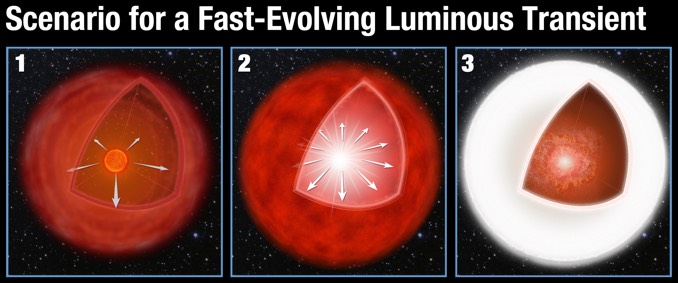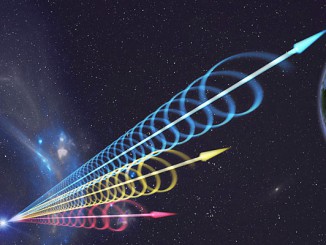
Once every second, somewhere across the known universe, a star explodes in a supernova blast, triggering a titanic, very rapid increase in brightness followed by a slow fading over several weeks. But a baffling, much more rapid rise and fall has been seen on rare occasions, an event known as a Fast-Evolving Luminous Transient, or FELT.
Because they are so short lived, only a few FELTs have been observed over the past decade and multiple theories have been advanced to explain them. But now the planet-hunting Kepler Space Telescope, equipped with a powerful camera built to record subtle changes in light intensity, caught a FELT in the act, capturing in detail the enormous rise in brightness and quick fade to black.
“We collected an awesome light curve,” said Armin Rest of the Space Telescope Science Institute in Baltimore, Maryland. “We were able to constrain the mechanism and the properties of the blast. We could exclude alternate theories and arrive at the dense-shell model explanation. This is a new way for massive stars to die and distribute material back into space.”
The “dense-shell model” holds that the original star ejected a thick shell of gas in a “near-death experience” about a year before its core collapsed, triggering a supernova. When the high-energy shock wave from the collapse ran into the surrounding gas shell, most of the kinetic energy was converted into a brilliant burst of light. The blast then quickly faded from view in about a tenth of the time needed by a typical supernova.
“The fact that Kepler completely captured the rapid evolution really constrains the exotic ways in which stars die,” said David Khatami of the University of California at Berkeley and Lawrence Livermore National Laboratory. “The wealth of data allowed us to disentangle the physical properties of the phantom blast, such as how much material the star expelled at the end of its life and the hypersonic speed of the explosion.
“This is the first time that we can test FELT models to a high degree of accuracy and really connect theory to observations.”
The team’s analysis of the Kepler data appears in the 26 March issue of Nature Astronomy.



